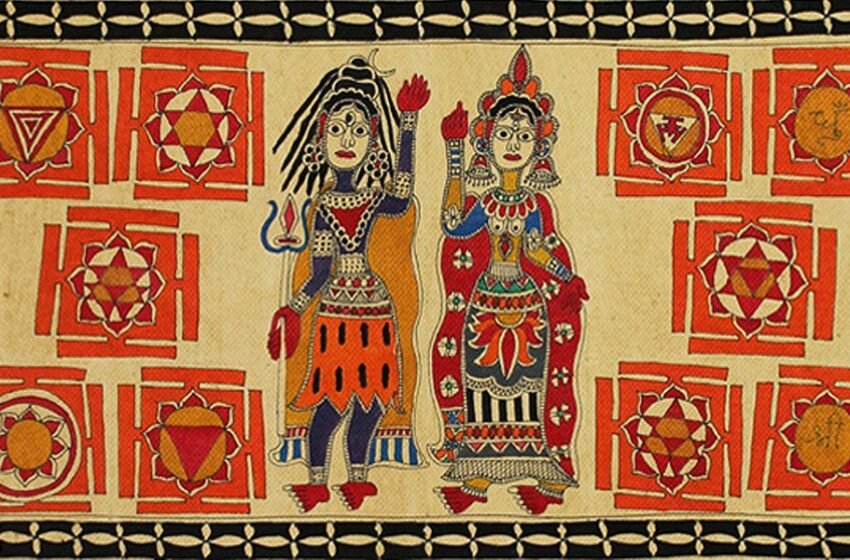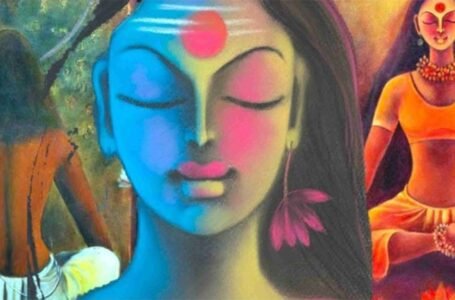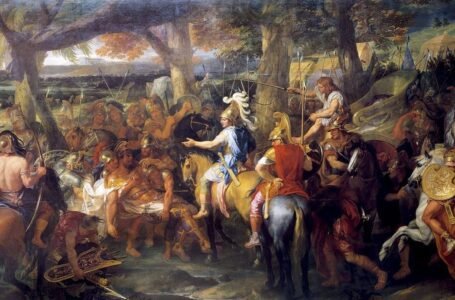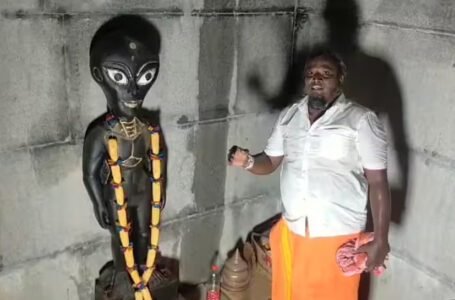The Tantric Art of Bihar: Mystical and Abstract Representations in Ritual and Aesthetic Traditions

The Indian state of Bihar, known for its rich spiritual and artistic traditions, has long been a center of esoteric knowledge, particularly in Tantra. The Tantric art of Bihar, deeply embedded in mystical practices, serves as a visual representation of spiritual concepts that transcend ordinary perception. These artworks, found in ancient wall murals, temple sculptures, and personal spiritual artifacts, depict abstract and symbolic elements designed to aid Tantric practitioners in meditation and ritualistic practices. Despite their historical significance, these art forms have largely faded into obscurity, overshadowed by mainstream religious and artistic traditions. This article delves into the history, significance, and unique features of Bihar’s Tantric art, exploring its connection to esoteric rituals and its decline over the centuries.
Tantra, a spiritual and philosophical system that emerged around the 5th–6th century CE, played a crucial role in shaping Bihar’s religious landscape. As the birthplace of Buddhism and an important center for Hinduism and Jainism, Bihar witnessed the flourishing of esoteric traditions that combined ritualistic, meditative, and artistic elements. The monasteries of Nalanda and Vikramashila were not only hubs of Buddhist philosophy but also centers where Tantric Buddhist practices thrived, influencing artistic representations in the region. During the Pala dynasty (8th–12th centuries CE), Tantric art reached its zenith in Bihar. The Pala rulers, patrons of Buddhism and Tantra, commissioned exquisite sculptures and murals depicting deities, mandalas, and sacred geometric patterns used in meditation and initiation ceremonies. However, with the decline of Buddhist institutions and the advent of Islamic invasions, Tantric art suffered a setback, eventually becoming obscure except in isolated sects and hidden ritual spaces.
The Tantric art of Bihar is characterized by its abstract, symbolic, and mystical representations, designed to function as both aesthetic expressions and meditative tools. Some of the key features include:
- Esoteric Symbolism and Abstract Forms Unlike classical Indian art, which often portrays gods and goddesses in human-like forms, Tantric art employs abstract symbolism to convey deeper spiritual meanings. Geometric patterns, mandalas, and yantras (mystical diagrams) are commonly found in murals and manuscript illustrations. These symbols serve as focal points for meditation, guiding practitioners toward higher states of consciousness.
- Depictions of Deities in Unconventional Forms Tantric deities are often depicted in fierce, multi-limbed, or androgynous forms, representing their transcendence of dualistic existence. Kali, Chinnamasta, and Bhairava frequently appear in Bihar’s Tantric art, embodying destruction, transformation, and the merging of opposites. Such representations were believed to invoke the deity’s power during rituals.
- Mandalas and Yantras as Spiritual Tools Mandalas and yantras are crucial components of Tantric art in Bihar, with their intricate patterns designed to focus the mind during meditation. The Sri Yantra, associated with goddess Tripura Sundari, and the Bhairava Yantra are prominent motifs, often found in murals and sacred spaces. These diagrams encapsulate cosmic principles and aid in spiritual ascension.
- Use of Sacred Colors and Hidden Inscriptions Colors play an essential role in Tantric art, with red, black, and gold dominating the palette. Red symbolizes Shakti (divine feminine energy), black represents the void or dissolution, and gold signifies enlightenment. Many Tantric paintings and murals contain hidden inscriptions or bija mantras (seed syllables) embedded within the artwork, accessible only to initiated practitioners.
- Eroticism and Union of Opposites Erotic imagery is another striking feature of Tantric art in Bihar, portraying the union of Shiva and Shakti as a metaphor for cosmic harmony. These representations, often mistaken for mere sensual art, embody deep philosophical principles of balance, energy transformation, and spiritual liberation.
Bihar’s rural and monastic landscapes were once adorned with exquisite Tantric murals, particularly in hidden caves, temples, and monastery walls. Some notable locations include:
Mahakala Caves, Rajgir: Once a site for esoteric Buddhist practices, the caves housed paintings of wrathful deities and intricate mandalas used in meditative rituals.
Mithila Region: Known for its Madhubani art, this region also has remnants of Tantric influences, where folk artists historically infused esoteric symbols within their paintings.
Nalanda Monastery: Murals discovered here suggest the integration of Tantric teachings with Buddhist philosophy, portraying celestial beings and mystical motifs designed for spiritual contemplation.
Personal spiritual art, such as painted manuscripts and portable shrines, also flourished in Bihar, used by wandering ascetics and Tantric adepts for meditative visualization.
Despite its former prominence, Tantric art in Bihar gradually declined due to multiple factors:
Religious Shifts: With the decline of Tantric Buddhism and the rise of Bhakti and Vedantic movements, esoteric practices lost mainstream support.
Islamic Invasions: The destruction of monasteries like Nalanda and Vikramashila led to the loss of invaluable artistic and spiritual traditions.
Colonial Influence: British colonial policies dismissed Tantra as superstition, leading to further neglect and loss of traditional art forms.
Modernization and Urbanization: Many ancient sites have been abandoned or destroyed, and knowledge of Tantric iconography has been confined to small sects and academic circles.
In recent years, there has been renewed interest in Bihar’s Tantric heritage, with scholars and artists working to preserve and reinterpret its artistic traditions. Digital archives, museum exhibits, and artistic revivals have helped bring some attention to these mystical artworks. However, much of this tradition remains hidden, known only to select practitioners and historians.
The Tantric art of Bihar is a remarkable testament to the region’s rich spiritual and artistic heritage. As a fusion of mysticism, philosophy, and visual expression, it offers profound insights into the esoteric traditions that once thrived in this part of India. Through abstract symbolism, depictions of powerful deities, intricate mandalas, and the use of sacred colors, Tantric art served not only as an aesthetic medium but also as a tool for spiritual enlightenment and transformation.
Despite its historical prominence, the decline of Tantric art can be attributed to a series of cultural, religious, and political shifts. The fall of Buddhist institutions, Islamic invasions, British colonial policies, and the modernization of Indian society collectively contributed to its near disappearance. What was once a vibrant and integral part of Bihar’s religious and artistic landscape has now been relegated to the margins, surviving only in hidden sects and academic studies.
However, recent efforts by scholars, artists, and historians to revive and document Bihar’s Tantric heritage have sparked new interest in these forgotten traditions. Digital archives, museum exhibitions, and cultural research initiatives are helping to bring Tantric art back into public consciousness. While much of it remains hidden from mainstream view, these efforts provide hope for its preservation and appreciation by future generations.
Studying Bihar’s Tantric art is not merely about uncovering lost artwork—it is about reconnecting with a deeper spiritual past. By reviving and understanding these mystical traditions, we gain a richer perspective on India’s cultural evolution and the timeless quest for transcendence through sacred art.


